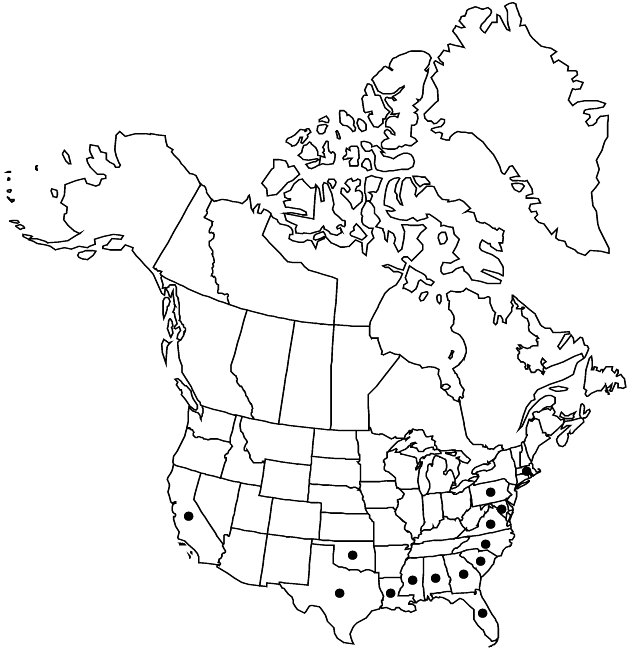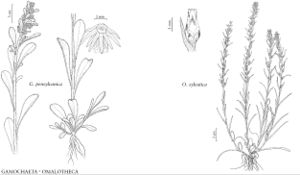Difference between revisions of "Gamochaeta pensylvanica"
Bol. Soc. Argent. Bot. 9: 375. 1961.
FNA>Volume Importer |
FNA>Volume Importer |
||
| Line 57: | Line 57: | ||
|publication year=1961 | |publication year=1961 | ||
|special status= | |special status= | ||
| − | |source xml=https://jpend@bitbucket.org/aafc-mbb/fna-data-curation.git/src/ | + | |source xml=https://jpend@bitbucket.org/aafc-mbb/fna-data-curation.git/src/f50eec43f223ca0e34566be0b046453a0960e173/coarse_grained_fna_xml/V19-20-21/V19_722.xml |
|tribe=Asteraceae tribe Gnaphalieae | |tribe=Asteraceae tribe Gnaphalieae | ||
|genus=Gamochaeta | |genus=Gamochaeta | ||
Revision as of 20:20, 16 December 2019
Annuals, 10–50 cm; taprooted. Stems erect to decumbent or procumbent, loosely arachnose-tomentose. Leaves basal and cauline, proximal usually present at flowering, blades spatulate to oblanceolate-obovate, 2–7 cm × 4–16 mm (becoming spatulate to oblanceolate bracts among proximal heads, surpassing glomerules, bases narrowed to petiolar regions, margins sinuate, apices often apiculate), faces concolor or weakly bicolor, loosely tomentose. Heads in glomerules in continuous or interrupted, spiciform arrays 1–12 cm × 10–15 mm (pressed). Involucres cupulate-campanulate, 3–3.5 mm, bases sparsely arachnose. Phyllaries in 3–4 series, outer ovate-triangular, lengths 1/2–2/3 inner, apices attenuate-apiculate, inner oblong, laminae often purple-tinged (at stereome), apices (transparent, sometimes golden) acute to obtuse. Florets: bisexual 3–4; all (or at least bisexual) corollas usually purplish distally. Cypselae (tan) 0.4–0.5 mm. 2n = 28.
Phenology: Flowering Mar–Jun(–Aug).
Habitat: Disturbed sites, exposed, moist soils, commonly partially shaded
Elevation: 0–500 m
Distribution

Ala., Calif., Fla., Ga., La., Md., Mass., Miss., N.C., Okla., Pa., S.C., Tex., Va., Mexico, Central America, South America, Europe, Asia, Africa, Australia.
Discussion
Gamochaeta pensylvanica is recognized by its obovate-spatulate, loosely tomentose and concolor or weakly bicolor basal and proximal cauline leaves, and similarly shaped spreading bracts among the heads. Occasional plants appear intermediate between G. pensylvanica and G. antillana. The latter differs in its more erect stems, linear to oblanceolate basal and proximal cauline leaves, and more nearly continuous arrays of heads with linear to narrowly oblanceolate bracts.
Selected References
None.
